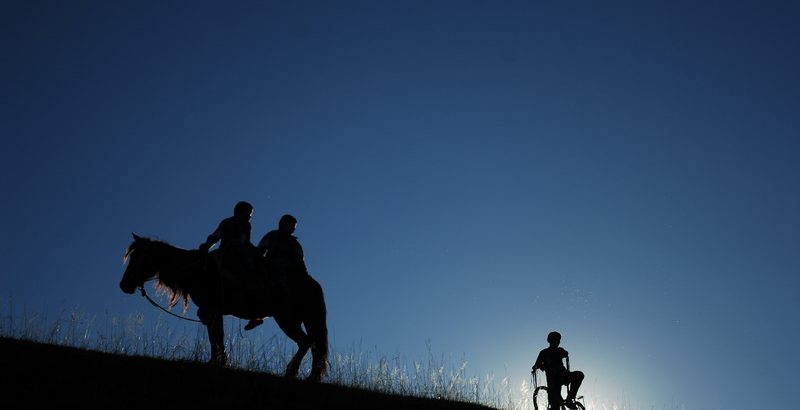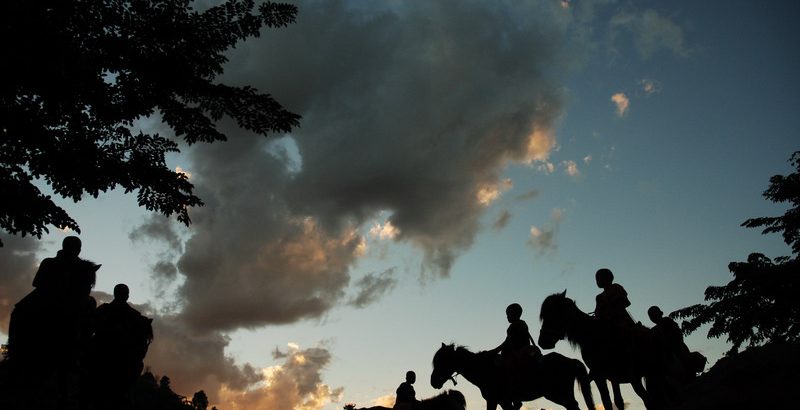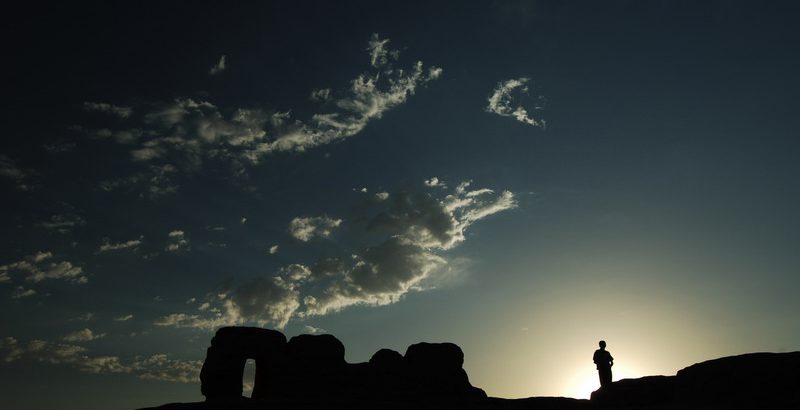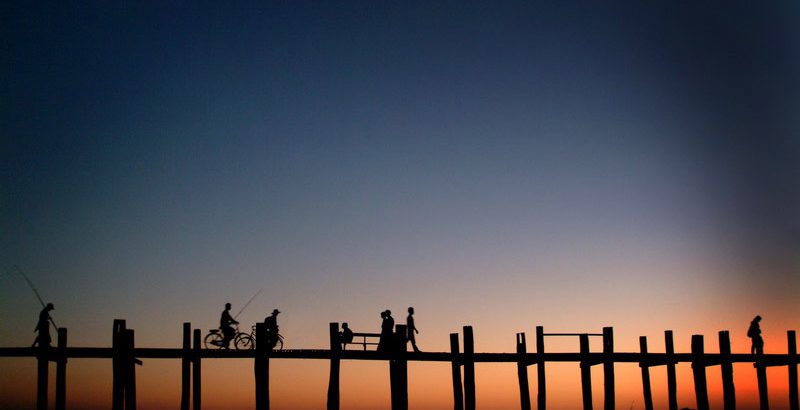Technology changes with time, but the fundamentals and recipes in photography remains. This article was first published in 2006, revised in 2018 and 2020
That round setting sun in the midst of fiery orange clouds sets the mood for a sunset shoot for the evening. This is the ideal case for any sunset lovers, which also made many avid photographers lined up their tripods for that moment in time.
However, most often than not, photographers are greeted with a big patch of glaring light instead of that perfect round orange sun. Some left with disappointment, some continue to shoot what they saw and got terrible results on their LCD screen. So rare that someone captured that round orange sun in the horizon, until someone tried a different angle by shooting a subject against the setting sun and hey presto, what resulted is a stunning silhouette.
Yes, here we are trying to see how best we can capitalize on the situation and turn it in our favour. This also makes you feel good, especially if you have spent lots of money and time going to exotic places in search for that great sunset shot. You would rather return with great silhouette shots in sunset rather than disappointing bright patches of light in the sky. Getting something done is better than getting nothing done.
Things to look out for if you want to shoot silhouettes:
- Distinctive subjects with clear outlines that make good silhouettes
- Any dramatic clouds, those puffy red-orange clouds
- Any stunning colours of the sky
The next thing to talk about is how to get it done.
- In Program(P), Aperture Priority(A), Shutter Priority(S) or Manual mode(M)?
- Fast or slow shutter speed?
- High or low ISO?
These might be the questions that spin in your mind as you prepare yourself for the shot. For a start, by asking yourself whether you are shooting with or without the tripod will help answer your queries.
If you have a tripod and your silhouette subject is stationery, any shutter speed will get the job done. You can use the lowest ISO with a tripod, set your exposure mode to either P,A,S,M mode, and enjoy the shooting session. At A or M mode, you can even consider setting to a slightly smaller aperture like f8 or f11 to get a deeper depth of field with the tripod.
If you do not have a tripod and your silhouette subject is stationery, your main problem would probably be camera shake due to shutter speed slower than 1/(focal length), or slower than 1/15 if you have anti-shake lenses. In this case, you may have to consider using a higher ISO and also with a bigger aperture to get you a faster shutter speed to minimize camera shake.
So far, we are talking about stationery silhouette subjects. In the event of a non-stationery silhouette subject, you may have to set your ISO higher and a bigger aperture to get a shutter speed fast enough, ideally at least 1/125, to freeze the subject and minimize camera shake.
It is important to realize the difference between camera shake and subject shake. The culprit behind the 2 types of shakes is slow shutter speed. This should not be overlooked.
For the beginners, the following may help orientate you a little. If your viewfinder panel shows you:
- 125. f3.5 — It means you have a shutter speed of 1/125 of a second at aperture f3.5
- 15” f5.6 — It means you have a shutter speed of 15 seconds at aperture f5.6
However, is there anything wrong with camera shake or subject shake? Some photographers view camera shake and subject shake as part of the creativity process. True to some extent, but on a visual aspect, I think most of us can differentiate a “creative shake” and a “camera shake” with our knowledge of shutter speed. Let the public opinion decides.
Another thing is the White Balance. For good colour rendition, setting the White Balance to Daylight (Sun icon) will be the ideal choice. This is very critical especially if you want good colour. As for the colour space, you may consider setting it to sRGB instead of AdobeRGB, unless you are ready for massive adjustment of colours in the Photoshop software.
Last but not least, perhaps it is time that we put aside the stereotypical mindset about sunset. Must the sunset always have that orangey sky? From a light blue sky slowly turning orangey, closing to a dark blue twilight before the sun finally sets into the horizon which brings about a blanket black sky. This is the whole process of sunset!
With the above in mind, enjoy your shooting session in the evening, probably even from the window of your house if it overlooks the West direction where the sun sets.
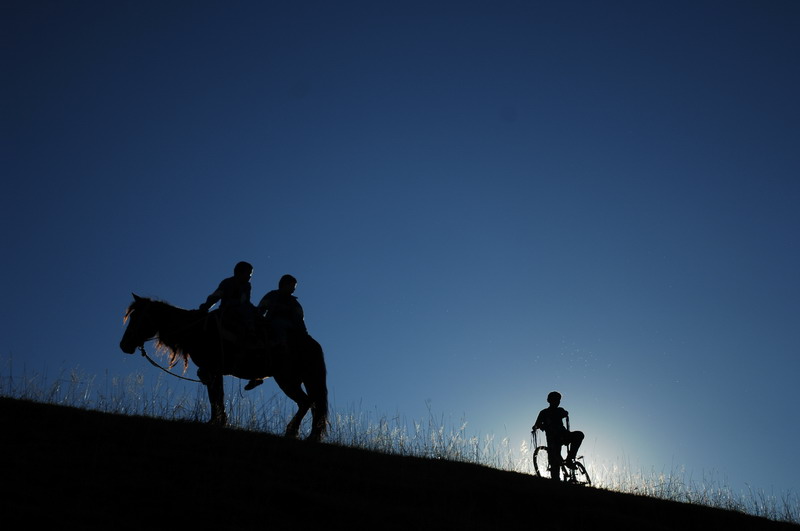
Centre weighted, Daylight White Balance, ISO100, Aperture Priority Mode, Shutter speed 1/2500, Aperture f4.2
No doubt that the sky is bluer overseas. Chanced upon a setting sun with 2 subjects for my silhouette effort. Squat a little, get a low angle, hide yourself from the sun and make use of the boy with the bicycle to shoot against the glaring sun.
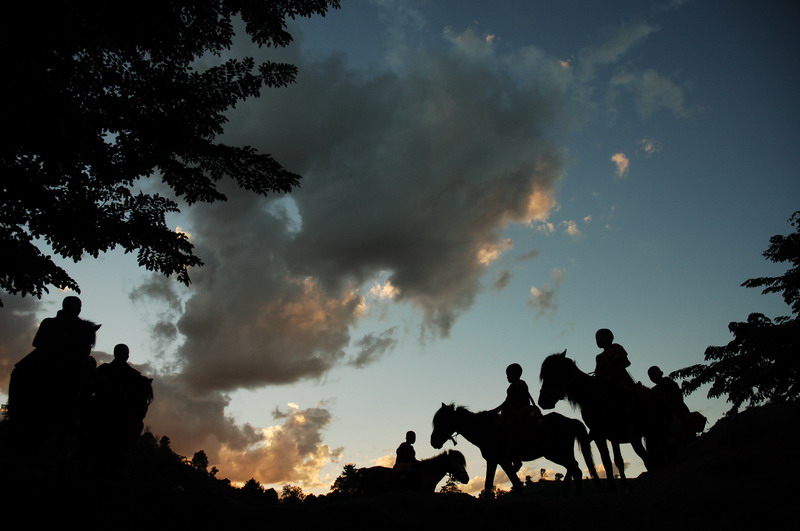
Centre weighted, Daylight White Balance, ISO400, 12-24mm lens, Aperture Priority Mode, Shutter speed 1/1000, Aperture f4.
Look at the dramatic clouds. I sat on the ground to get a low angle so that I can get a dramatic silhouette shot with the clouds as my background. Use of the wide angle lens is essential. You have to be careful and wait for the right moment to shoot, avoid having the horses too close to prevent “overlapping”. You need that distinctive shape of the horse and rider as silhouette.
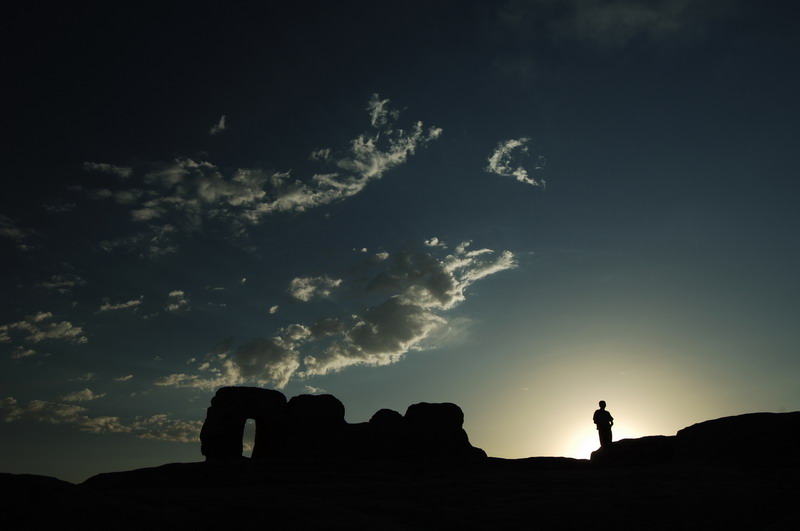
Centre weighted, Daylight White Balance, ISO100, 12-24mm lens, Program Mode, Shutter speed 1/250, Aperture f8.
Within the ancient ruins of Jiaohe in China Xinjiang, the dramatic old ruins make a good setting for silhouette shots. This security guard overlooking the place became the focal point.
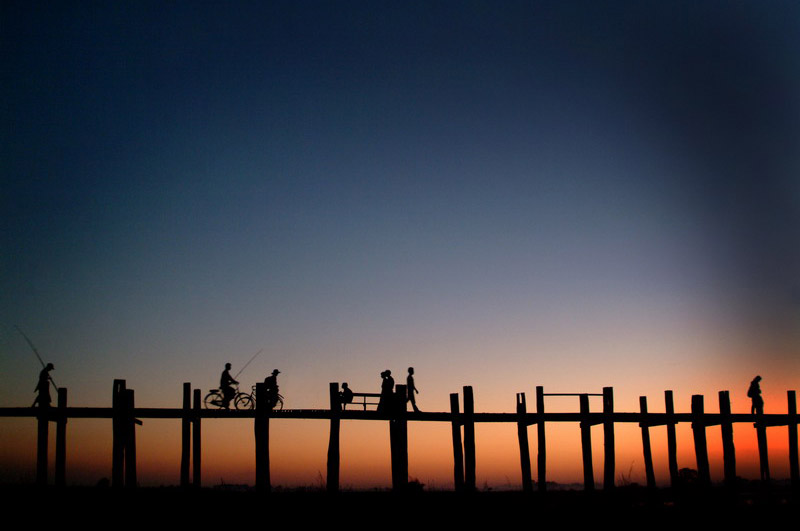
Centre weighted, Daylight White Balance, ISO800, 18-70mm lens, Program Mode, Shutter speed 1/20, Aperture f3.5, with tripod.
The U-Bien bridge in Myanmar’s Mandalay saw many people walking slowly on its narrow platform. It was low tide, hence the chance for me to get onto the mud banks to get this shot.
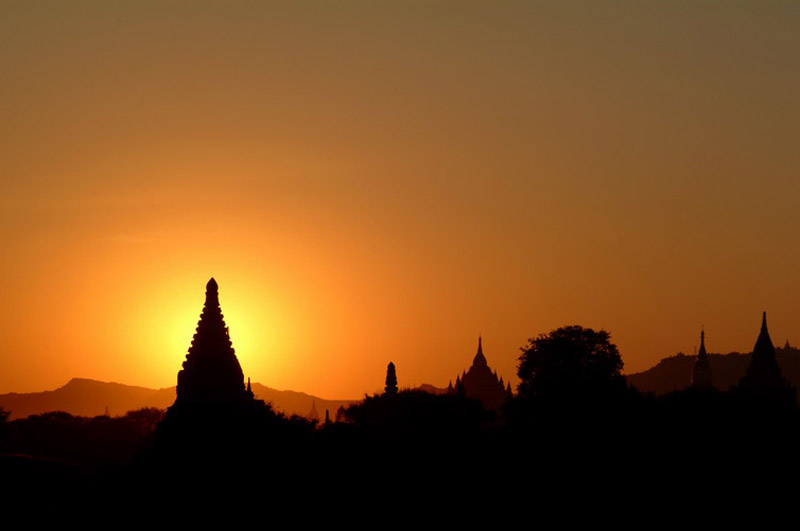
Centre weighted, Daylight White Balance, ISO100, 80-200mm f2.8 lens, Program Mode, Shutter speed 1/750, Aperture f6.7, with tripod.
Walking up the steep steps of the pagoda to get this sunset shot was no easy feat. The group of us hoped to catch the round orange sun but were greeted with the big patch of light again. To capitalize on the opportunity, let’s move ourselves a little (since we cannot move the pagodas), hide the patch of glaring light behind the bigger pagoda and get the shot done.
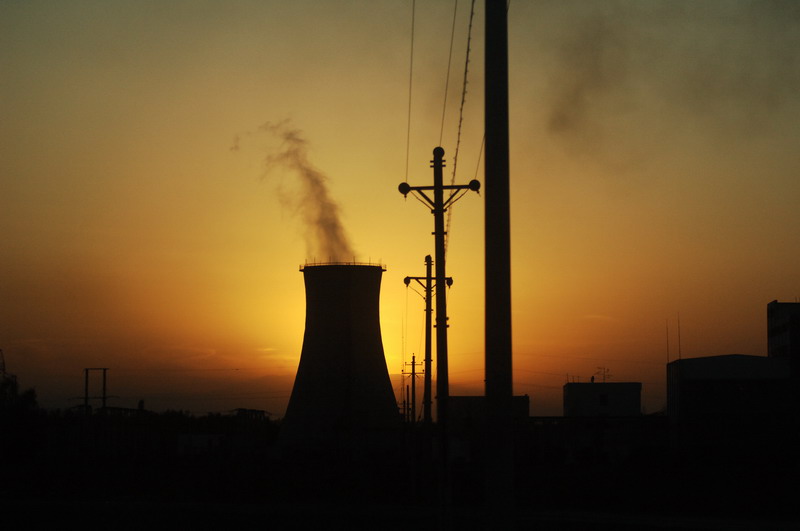
Centre weighted, Daylight White Balance, ISO640, 80-200mm f2.8 lens, Aperture Priority Mode, Shutter speed 1/8000, Aperture f2.8, handheld shot through the window of the moving tour bus.
There was no chance to ask the tour bus to stop for a bunch of photography enthusiasts. Hence, I have to standby my camera, set the ISO and Aperture that will give me a 4 digit shutter speed, and I fire away the shutter release firing more than 6 consecutive shots and got one of this. I observed that the art of shooting from the tour bus is to try to get a 4 digit shutter speed.
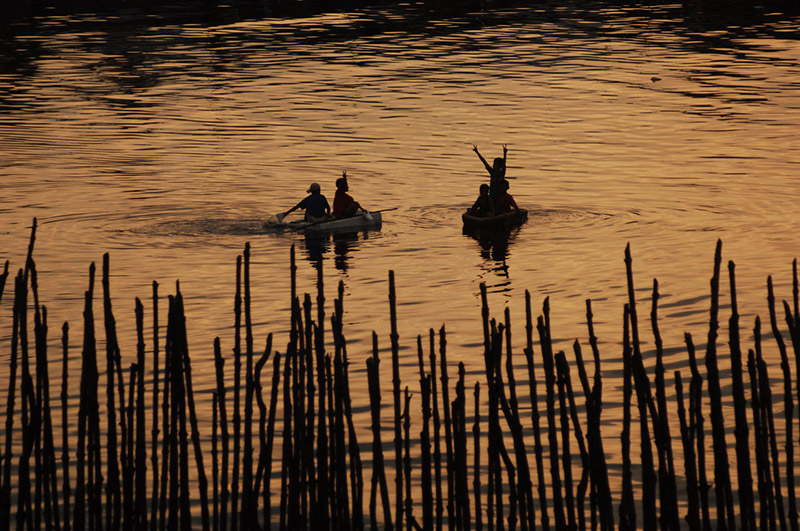
Centre weighted, Daylight White Balance, ISO160, 70-300mm, Aperture Priority Mode, Shutter speed 1/350, Aperture f4.2, handheld shot
Sometimes, the river bank can be a good setting for sunset silhouette shot. Wait for some interesting subject.
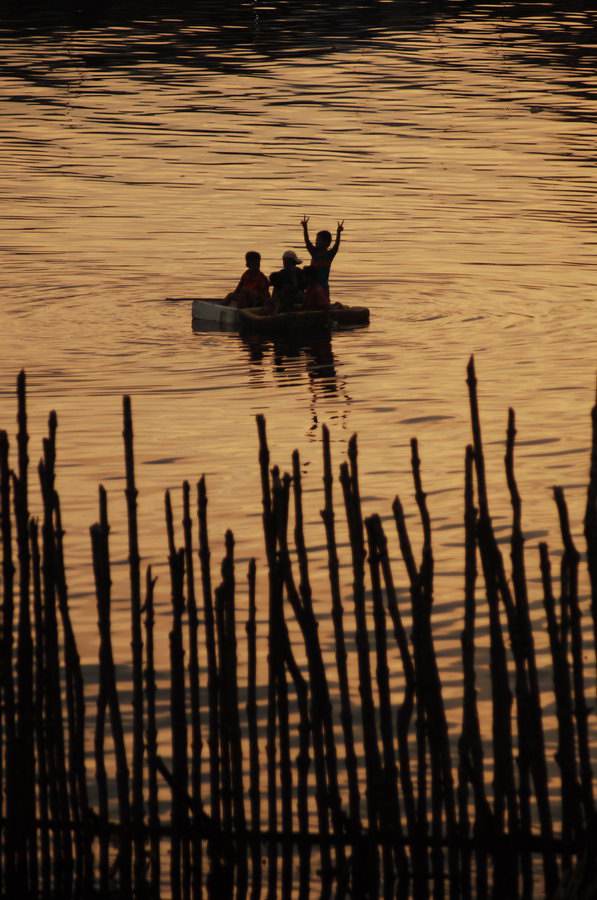
Centre weighted, Daylight White Balance, ISO160, 70-300mm lens, Aperture Priority Mode, Shutter speed 1/320, Aperture f4.5, handheld shot
Sometimes, the river bank can be a good setting for sunset silhouette shot. Wait for some interesting subject.
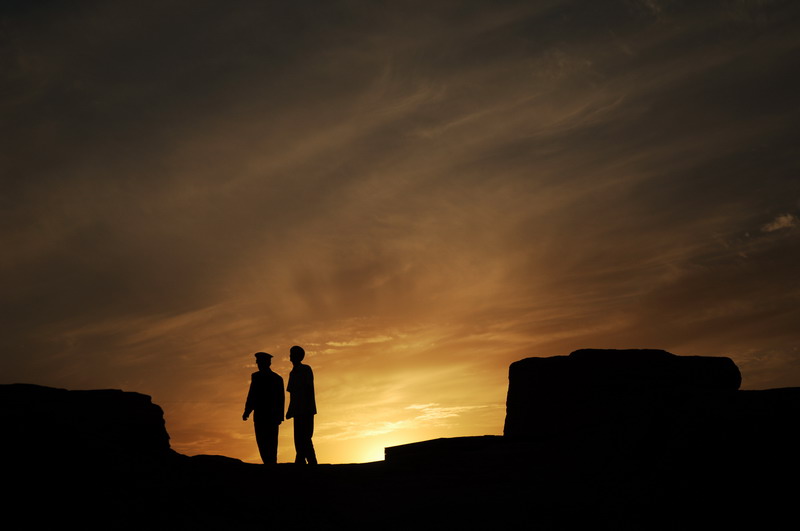
Centre weighted, Daylight White Balance, ISO100, 18-70mm, Aperture Priority Mode, Shutter speed 1/4000, Aperture f4.2, handheld.
The sun is setting fast. There is little time to lose. Quickly find some subject, if not, get someone to pose in the picture. We asked a friend to pose with the security guard.
